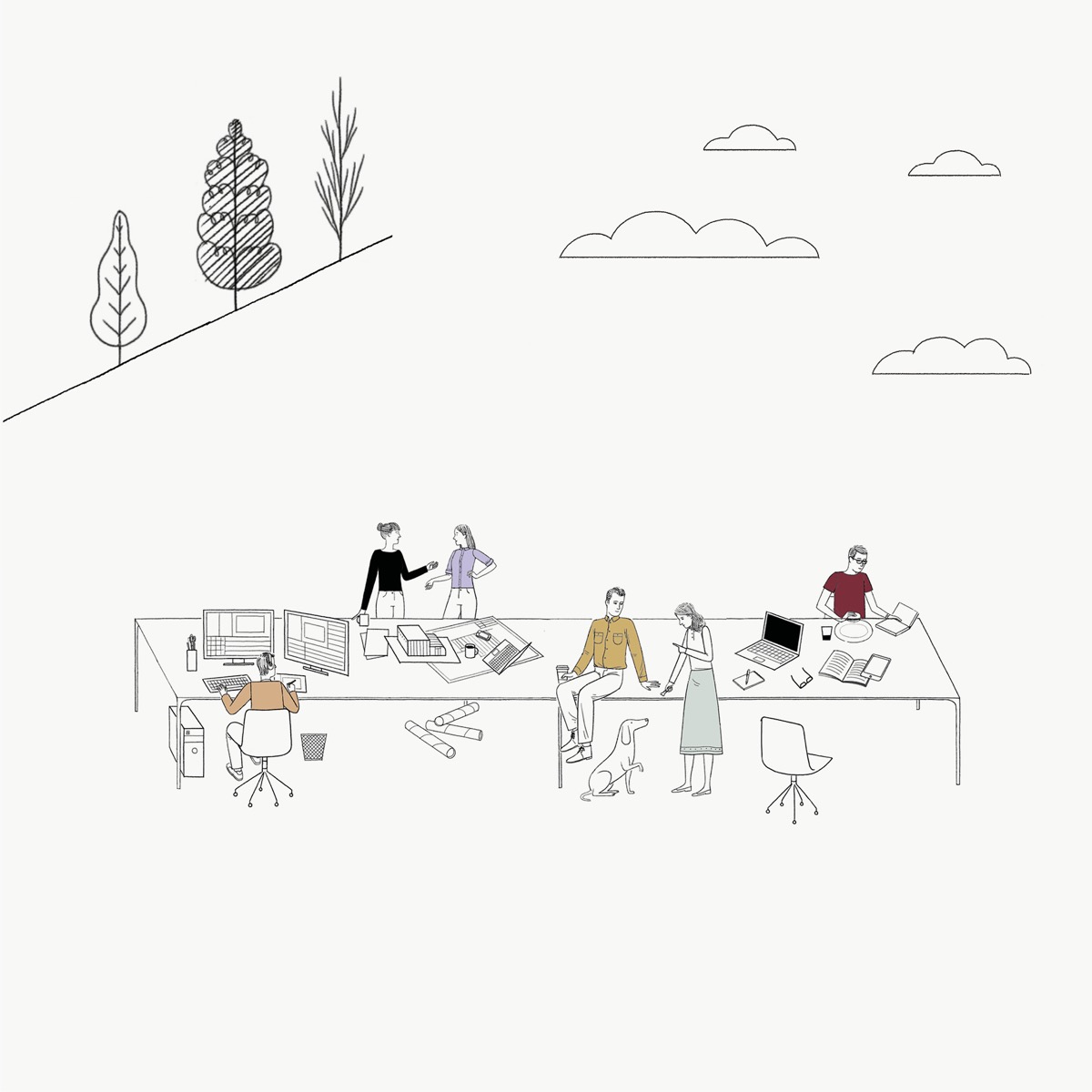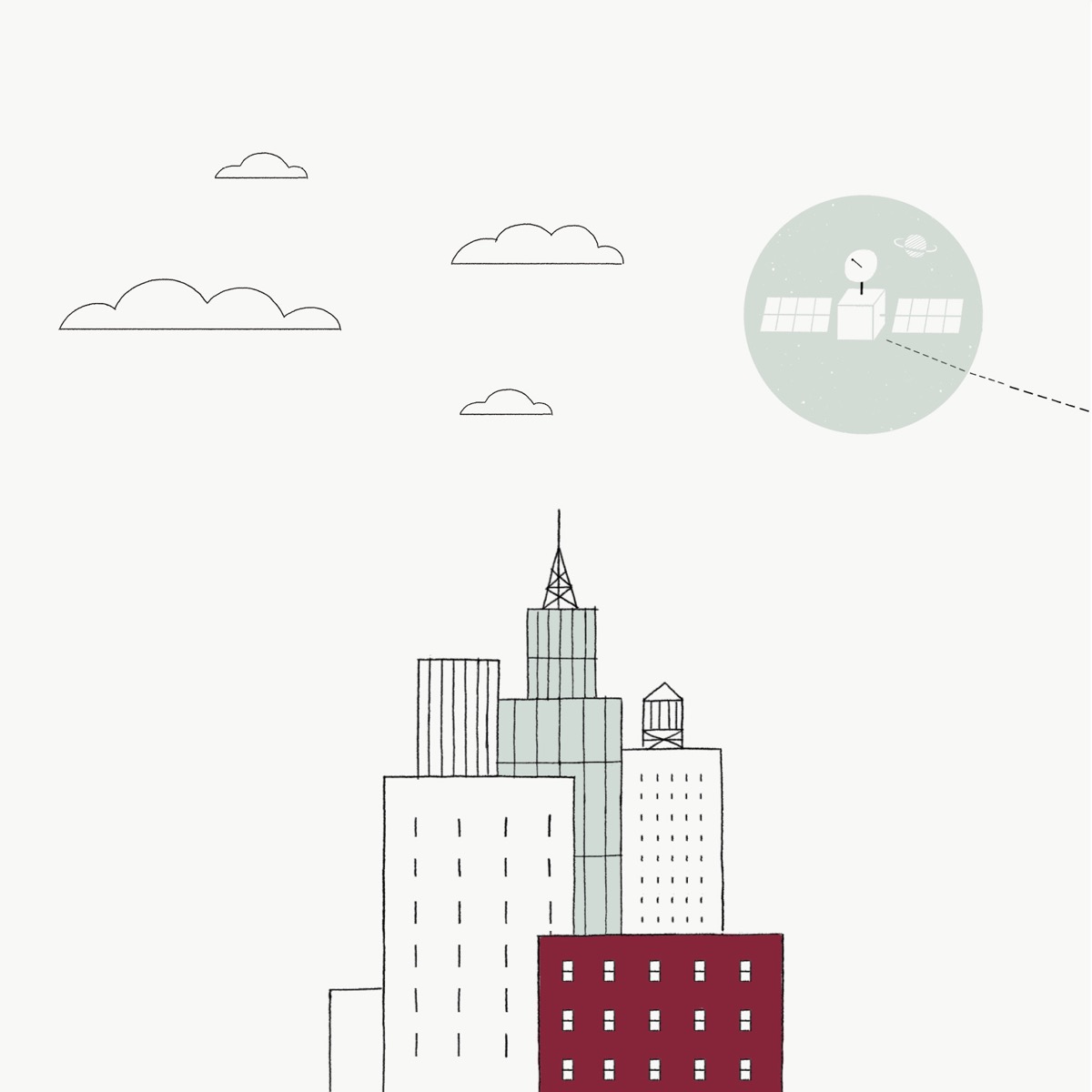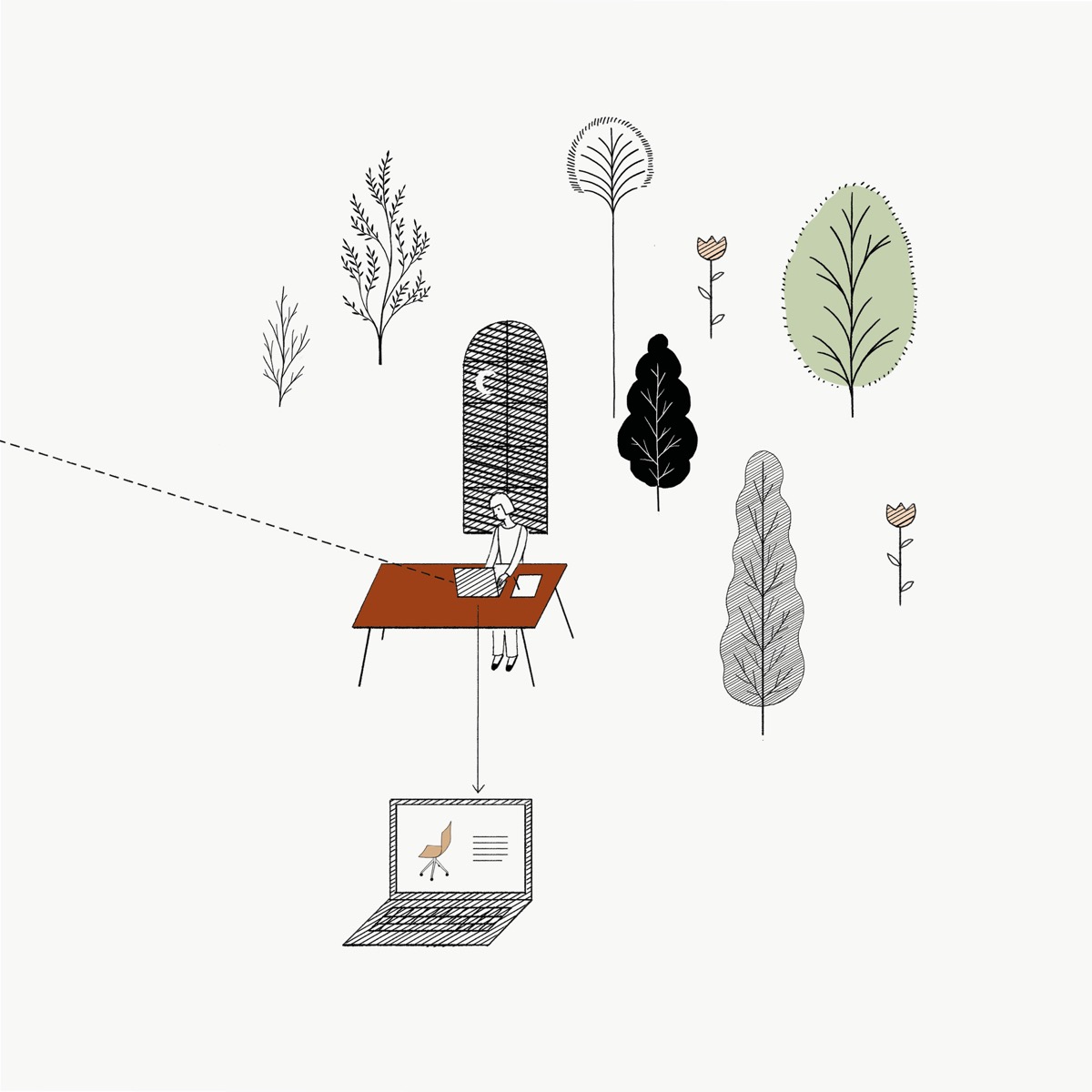
An interview with Andrea Mulloni — Head of Sustainability and Michela Possagno — Environment Expert
Let’s start with the shift you’ve seen in sustainability at Arper in the past few years. What has changed?
AM - The first thing that changed is the company realized we should be doing things differently. For twenty years we have been adopting a policy based on compliance, even if not forced by the regulatory system. Obviously, years later we are still in a global crisis. So we said, ‘the only option we have is to raise the bar even more’ and shift from an already proactive approach to a more strategic approach. In Italy we say ‘we took the bull by the horns.’ It meant leveling up and investing. We formalized the sustainability department, and now we are talking about strategic projects projected into the future, rather than things that look to the past. In other words, we are shifting the company focus from strategic Corporate Social Responsibility to Corporate Shared Value.
MP - We realized that what drove Arper over thirty years ago–family values and integrity–has not changed, but the world has changed. We started with Arper as a responsible producer. That was good, but today it is not enough. So we are trying to live up to our founding leadership, to act as a leader not a follower, and ask ourselves questions that maybe nobody asked themselves back then. We are changing not only how we act, but how we think about what good design means.
Beginning a sustainability journey can be hard for a small organization. You start a sustainability department, but then what?
AM - Well, the first thing you have to do is collectively create a strategy that synthesizes specific goals. That’s easier said than done. In order to be in agreement, there’s a lot of calling upon people from all sides of the company. We set up workshops and asked everyone what we should be tackling, and at the end of this process–which took us a couple of months, to be honest–we came up with 17 topics of interest. Because these topics may be different in different departments we developed three strategic pillars of sustainability: the Wellbeing of People, the Transition to a Circular Economy, and the Reduction of Environmental Impact. Now is where the fun starts.


What are some projects you’re particularly excited about?
MP - A big one is refurbishment. In our Circular Economy pillar, we know we want to approach three major topics: refurbishment, rental models and take back. But we can’t tackle these all at once. We’ve started with refurbishment. Right now we are setting up a collaboration with one of our dealers in the Benelux market, which is an area that has a lot of experience already with refurbishment. With this partner, we provide information about which products out in the world we predict are coming to their end of life, and then the partner can get in touch with those users, bring the product back and restore it. We are doing this locally with a partner because it would not be sustainable to transport products back to Italy solely for refurbishment. So we start in the Benelux area, but we will be adding partners in other locations to build a Europe-wide cluster network. We really enjoy working with partners in this way. It's a philosophy of mutual growth. You can exchange ideas, say ‘I’m approaching this topic in one way, but your way is better.’ We need to look towards each other to create a movement.
Which projects will people start to see out in the world first?
MP - Mobility is a topic where we have some momentum. Our fleet is moving towards entirely electric cars. In addition, we have electric charging stations for employees to charge their vehicles free of charge at the office. We also have e-bikes available for employees who prefer to bike to and from work. We are finalizing plans for our carpooling program. Employees will be able to sign up through a platform and book carpooling with colleagues for their commute, and receive some cash back as an incentive. Lastly, we are in talks with a partner to convert operational shuttles between warehouses to electric. While we’re developing 5 year plans of large initiatives, it's very important to enact improvements where employees and clients can see immediate progress and start to trust Arper’s investment in the vision.
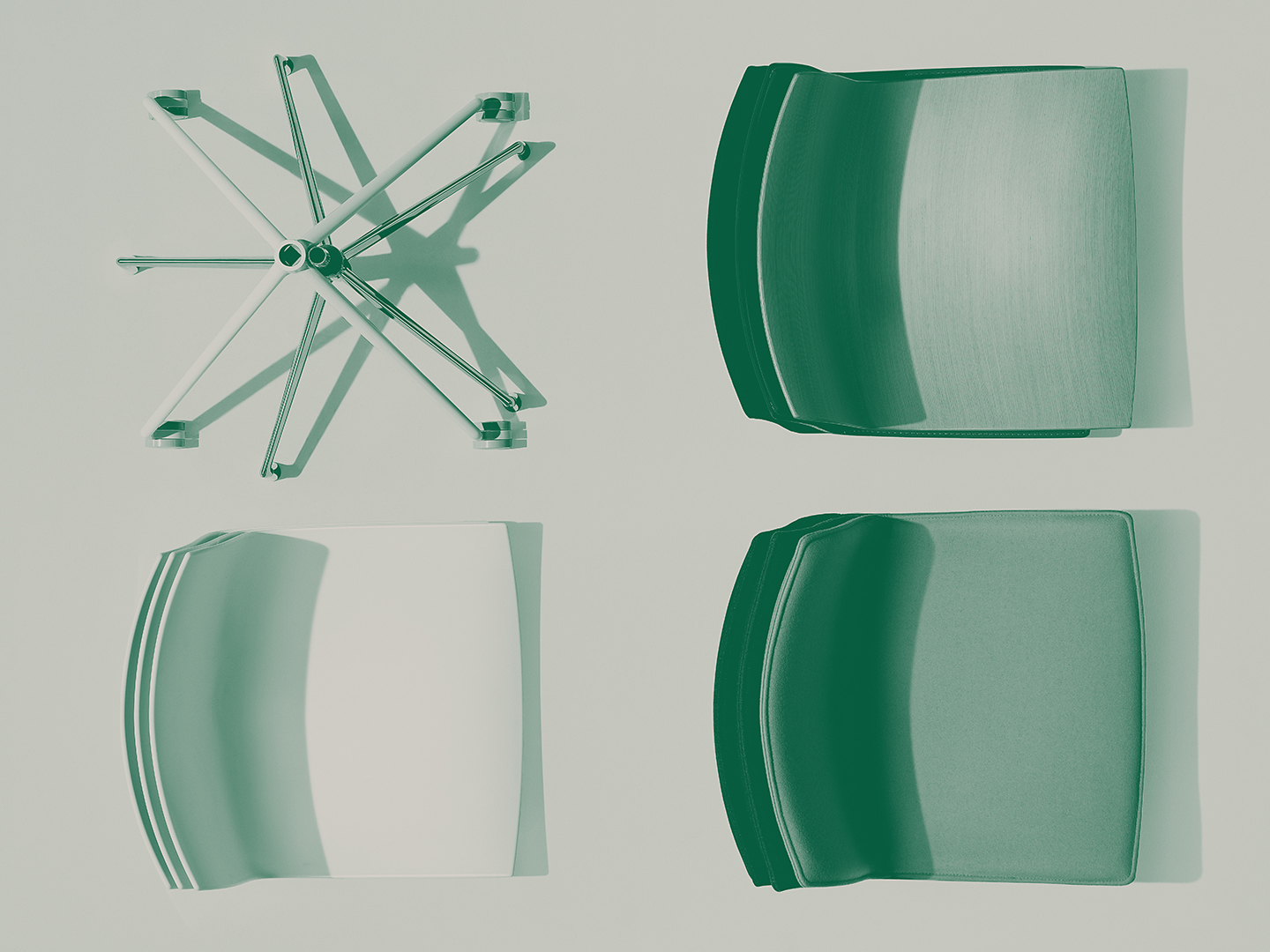

And how involved is the organization outside of your team?
AM - One major aspect that we have to keep clearly in mind is that we always need to think in terms of one big Arper: the HQ is where we ideate and test our projects, but sooner or later everything will have to be scaled up to the whole Arper group. This is must of our daily routines and the conditio sine qua non of every project. With that said, we’ve spent a lot of time training across the organization, but our best assets are definitely the Ambassadors. We have individuals who act as the ambassador of sustainability in their department, ensuring that projects are prioritized and their teams have the resources they need. For example, Human Resources is at this moment developing a project of remote working and other initiatives to make people feel very goal-oriented and empowered in their work. That in itself will contribute to our sustainability efforts. It's all connected. It’s shared value.
How do you ensure that the values and goals you have set will be upheld throughout the entire pipeline of Arper with suppliers and partners?
AM - The nature of our business involves a lot of suppliers. When we select suppliers, our first criteria is distance from Arper headquarters. We recognize that it makes no sense for us to set targets if we don't involve our supply chain partners. Last year we created the Arper District: this is a selection of partners that we bring into the office to share our goals, our strategy, our numbers–which is usually the largest factor in establishing trust–and give them training. We then offer them consultancy whenever they need help getting a certification or build a new process-no charge. Some suppliers call trying to set up a symbiosis network with us using byproducts of their production; others are asking us how they can get ESG rated. We are building the same awareness and motivation that we have within Arper with our partners. We are slowly but steadily building an ad-hoc cluster of excellence.
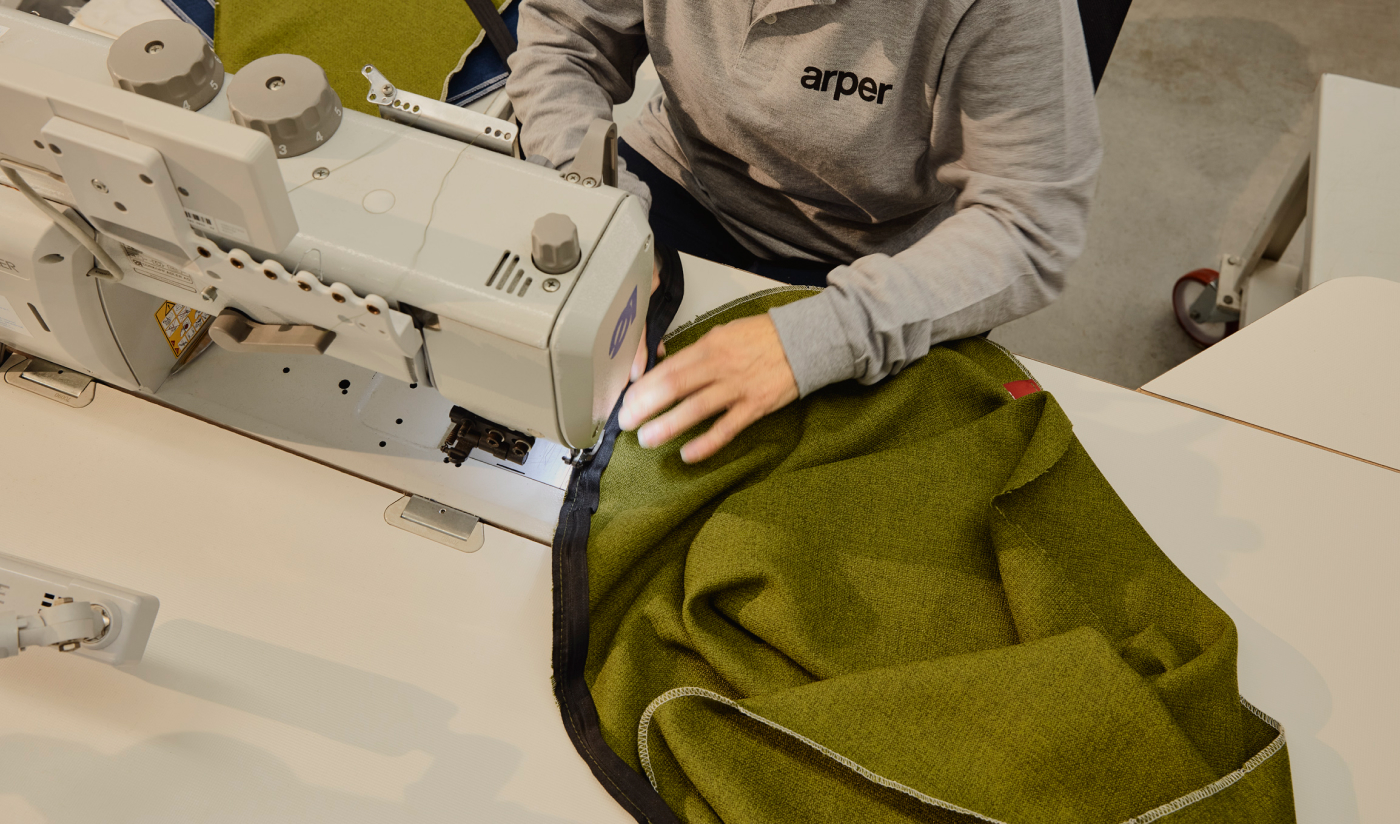

Are you asking anything specific of those partners in terms of benchmarks, etc?
MP - We agree upon benchmarks together so that they are evaluated on a rating they know, and so they know how to improve that rating. And we will work with them to improve the rating if they need it. We don’t shut the door.
You’ve spoken about how this vision goes beyond the company. How are you engaging the industry or the local community?
AM - We are working quite a bit with local schools. We would like to bring our knowledge but also our sense of urgency on this topic. It's a moment in young people’s lives when they are deciding what’s important to them. For us, we can say ‘hey we’re Arper, and we’re here for when you enter the workforce if you’re interested in this.’ Building a strong social structure in the community elevates the whole area. We really believe in that. Within the industry and in other sectors, we are starting to share best practices. We’re building a book of where we map out calculating scope of emissions etc, how we did it and what worked. This kind of relationship with peers again grows the whole industry.
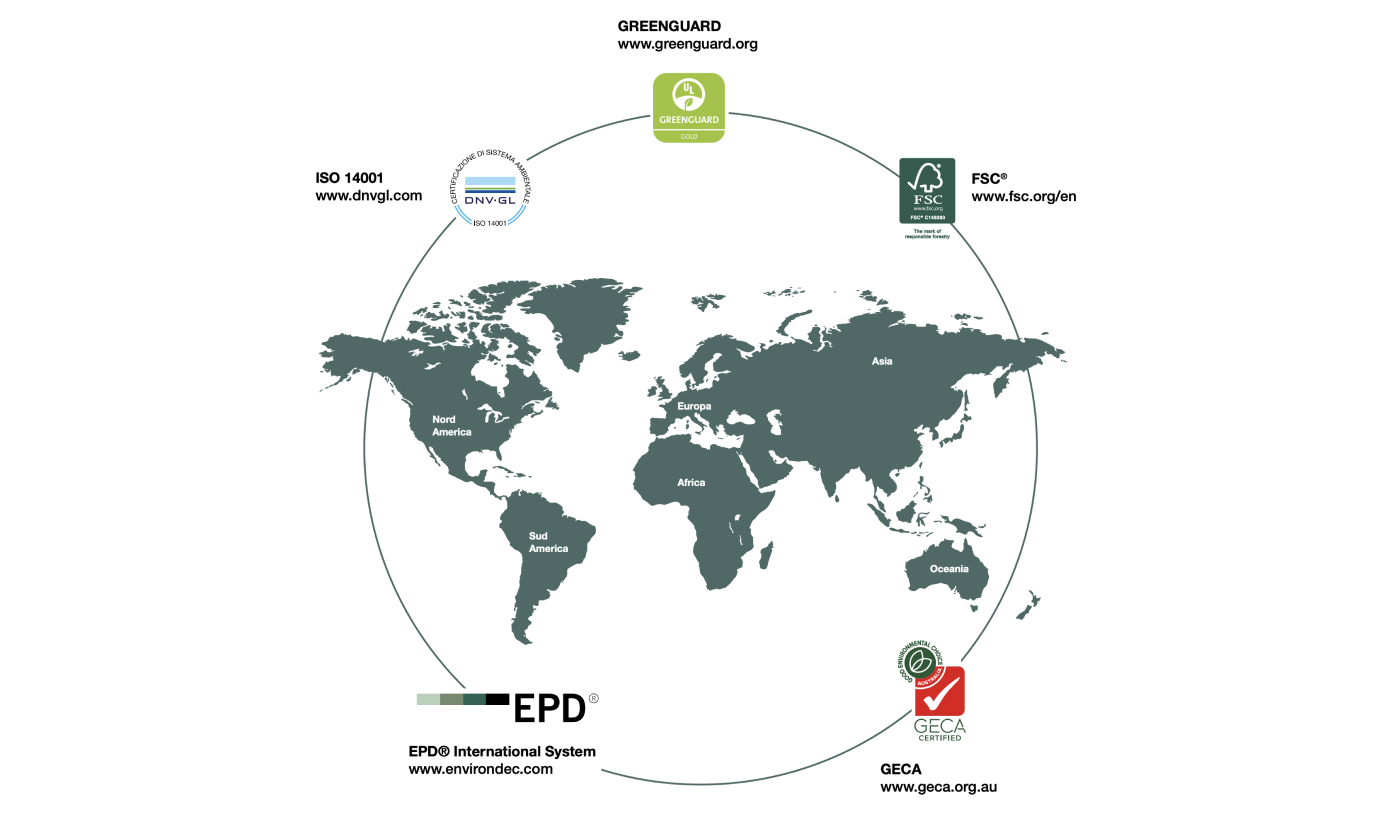

Of course one of the hardest things for companies to do is measure impact. Oftentimes an organization sets goals, but it’s hard to know if they are reached. How can clients know that Arper is truly following through?
MP - Absolutely. For the first time last year we produced what we call an organizational carbon footprint. This basically accounts for how much CO2 you are emitting as an organization and in your products. The reason why we needed that badly, is that if you want to improve, you need to have a baseline. Our goal is to reduce our footprint by 55% by 2030. That is the number that was agreed upon by the European Union , and that is what we are working towards.. We don’t know just how difficult it will be to hit, but ’ve always said that if you hit your goal easily, it wasn’t big enough. Now we are working with Marketing and Communications to figure out the most accessible way to communicate that data for a broad audience. We want engagement with our clients on this, we want them to ask where we’re at. There must be some way of direct relationship between the client and the producer in terms of sustainability. Otherwise, it doesn't make sense.
That's really exciting. Where can people stay updated about Arper's sustainability journey or get more involved?
And if peers in the industry would like to join in on the knowledge sharing, should they reach out directly?
AM - Yes. Directly to Michela and myself. Collaboration is at the foundation of what we do.


